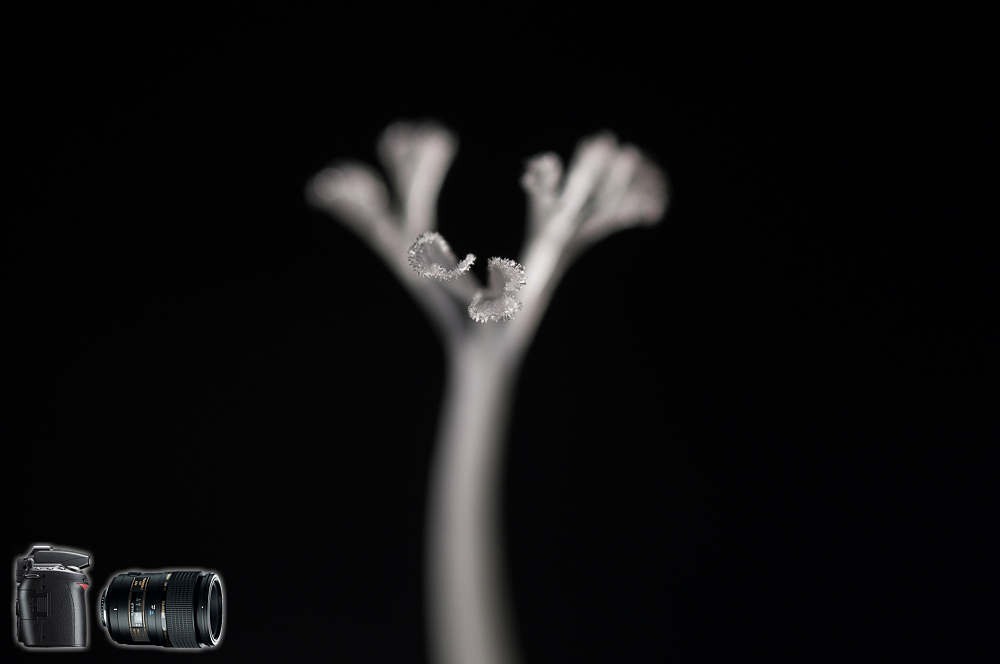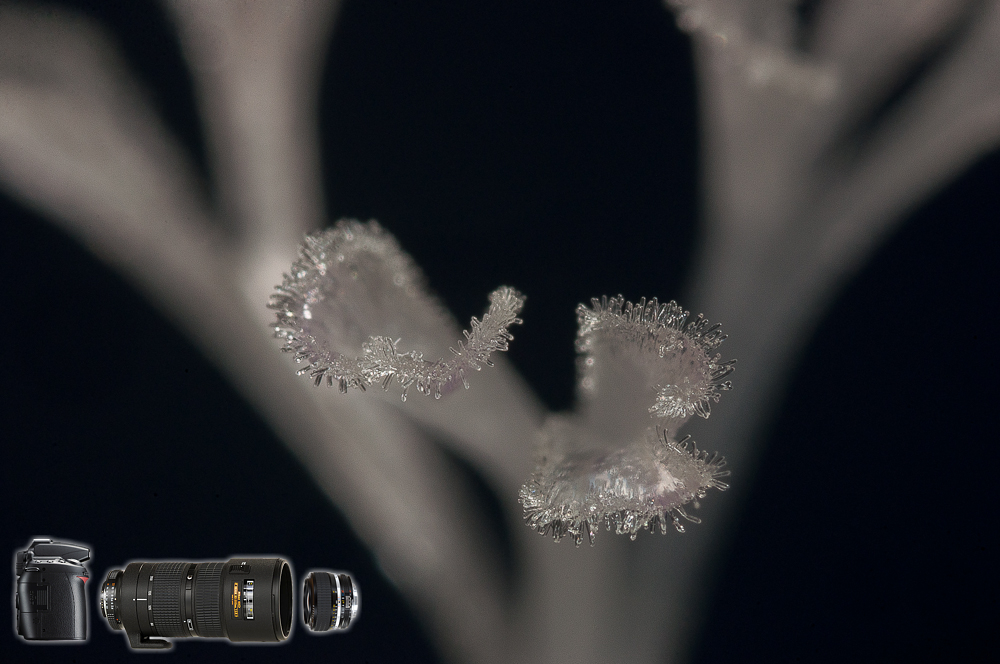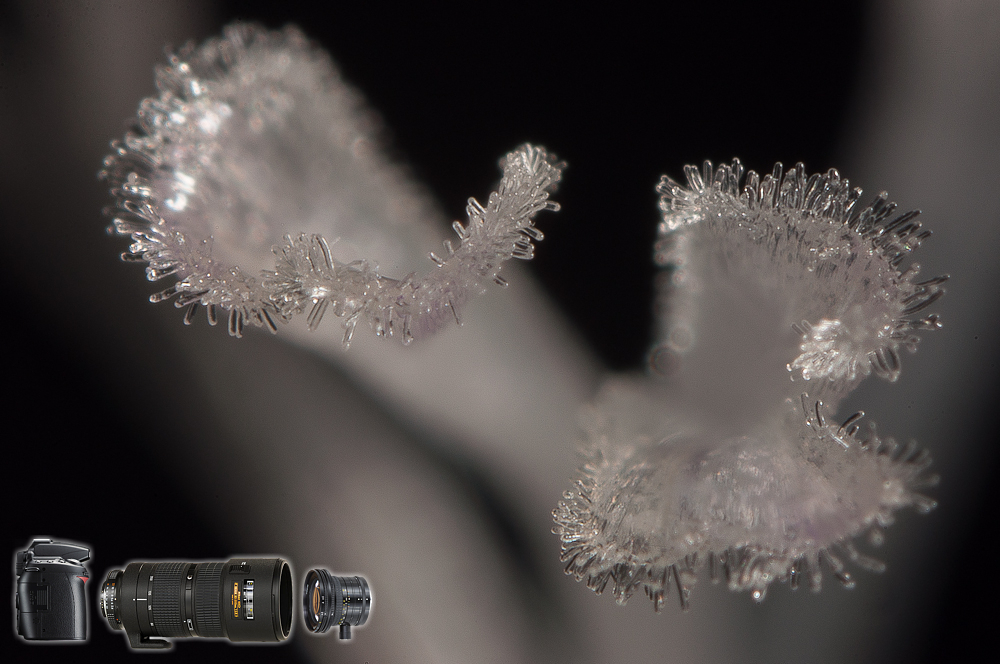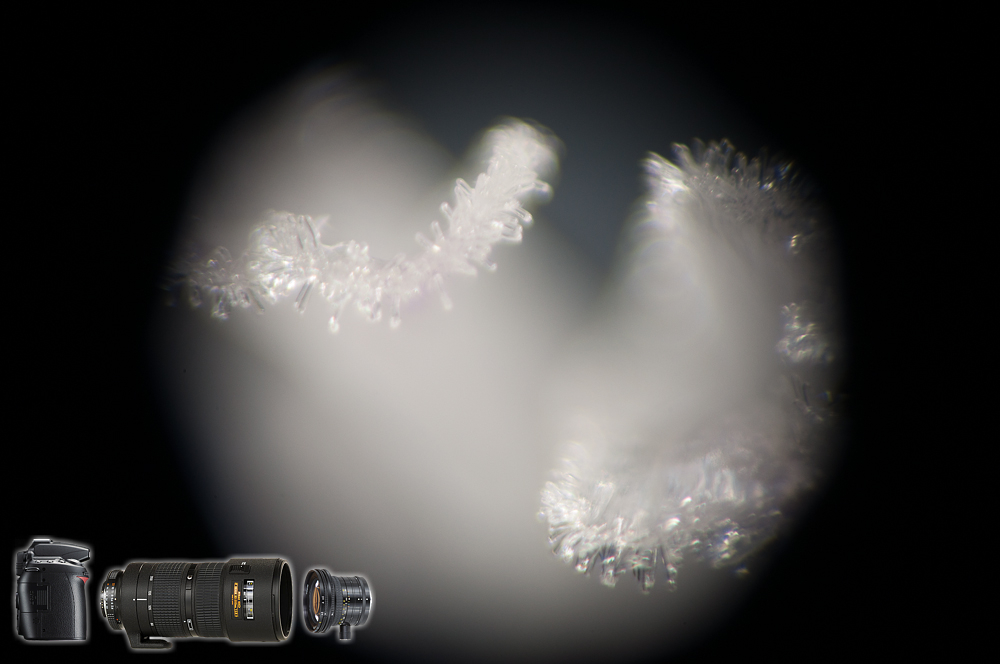Beyond 1:1 - extreme magnification in macro photography, part IV - combining two lenses
- Details
- Category: Gear
- Published: 28 November 2012
The last technique I'd like to cover requires combining 2 lenses together through a double male thread ring. One lens is mounted normally onto the camera and the other is reverse-mounted onto the first lens. The longer the lens mounted onto the camera the larger magnification can be achieved. Lenses of choice for this article - 50mm f/1.2, 28mm f/3.5 and my 80-200mm f/2.8 set to 200mm. Must be said that it's good if the telephoto lens has a large aperture, otherwise problems with vignetting might occur. Also, throughout the shoot I had the 80-200's focus ring set to infinity and the reverse-mounted lens to the minimum value.
First off, as usual, is an image of the subject taken with the Tamron 90mm f/2.8 at 1:1 reproduction ratio.

Nikon D90 + Tamron 90mm f/2.8 + R1C1 @ 90mm, f/11, 1/200sec, ISO 200, 1:1 magnification
Now let's see what can be achieved with the 50mm f/1.2 mounted onto the 80-200mm lens set to 200mm. The 50mm is at f/11 and the 80-200mm af f/2.8. Why? I will demonstrate in just a moment.

Nikon D90 + Nikkor 80-200mm f/2.8 + reversed 50mm f/1.2 + R1C1 @ [200mm, f/2.8], [50mm, f/11], 1/200sec, ISO 200, 4:1 magnification
As you can see this is almost the magnification achieved by the reversed 50mm and fully extended bellows combo. As far as comfort of use is concerned, this is the only setup so far that allowed me to enjoy automatic light metering and TTL mode for the flashguns. All the other combinations of lenses, tubes and bellows required me to work in full manual mode as though there was nothing mounted onto the camera. Now let's give the 28mm a try.

Nikon D90 + Nikkor 80-200mm f/2.8 + reversed 28mm f/3.5 + R1C1 @ [200mm, f/2.8], [28mm, f/11], 1/200sec, ISO 200, 7.4:1 magnification
Once again we are venturing past the 5:1 mark and I think the image quality is even slightly better than when using the bellows. The distance from the lens to the subject was about 40mm in both cases. I mentioned earlier that I stopped down the lens that is reverse mounted and not the main lens. Since a picture is worth a thousand words, I'll better just show you what happens if I stop the 80-200mm down to f/11 and leave the 28mm wide open.

Nikon D90 + Nikkor 80-200mm f/2.8 + reversed 28mm f/3.5 + R1C1 @ [200mm, f/11], [28mm, f/3.5], 1/200sec, ISO 200, 7.4:1 magnification
This image is simply unusable, by any means. If I were to additionally stop down the 28mm to f/11 the sharpness would improve but the extreme vignetting would remain. So either way this is a big no-no. After seeing this I think you will appreciate the really not-so-bad image quality achieved with the 80-200mm plus 28mm as well as 28mm plus bellows. Also, when using a zoom lens remember to use it at its maximum focal length, otherwise once again issues with vignetting will occur.
The last part will feature a recap of everything written here so far. All the numbers in a neat little package. Stay tuned.